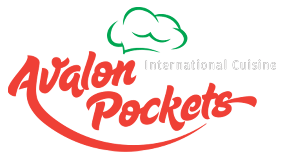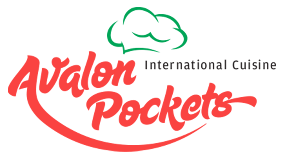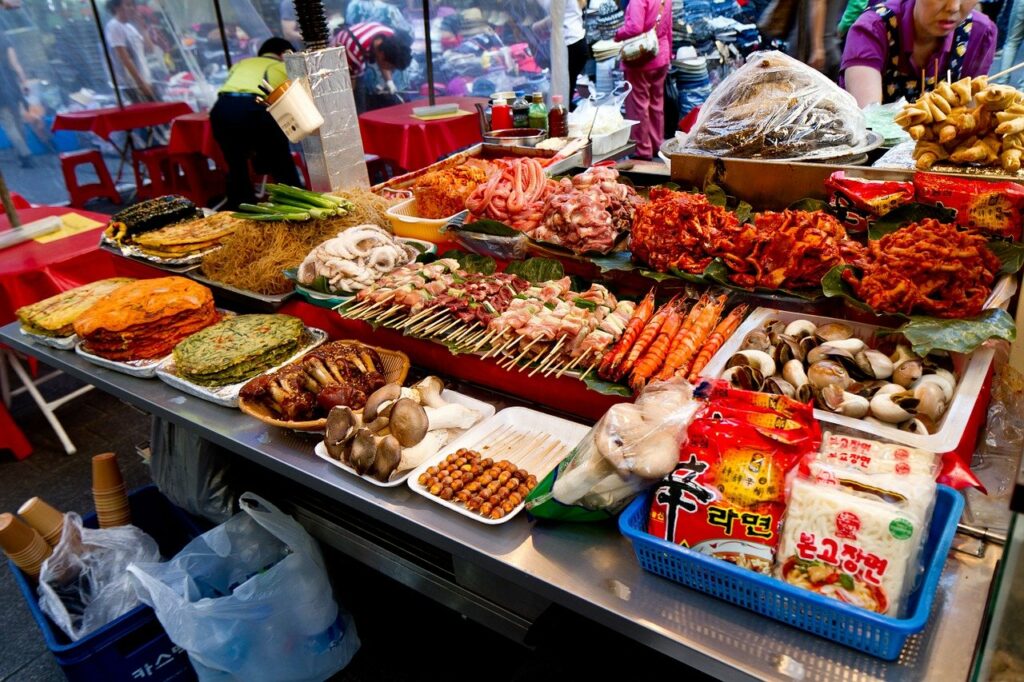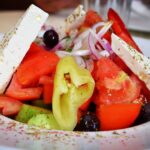(Even if You Don’t Live in the Mediterranean)
I’ve heard a lot of people complain to me and say, “How do I prepare my meals and make them as healthy as those in the Mediterranean diet recipes when I live in China or Australia or the Philippines?”
That is certainly a valid question! However, one does not need to live in the Mediterranean region to prepare healthy meals.
It’s Actually Not a Geographical or Logistical Problem
Your location on Earth will not impede your ability to source materials needed to prepare foods that can be considered as Mediterranean Diet-worthy. We’re also in 2021 A.D. now where technology puts everything within your reach with just a simple tap on your mobile phone’s screen, so you can definitely buy the necessary ingredients online or find a local dealer in your market or grocery store. For example, you can buy feta cheese and extra virgin olive oil (EVOO) on Amazon. If you live in Asia, you can buy ingredients to make a Mediterranean Diet recipe from Lazada or Shopee.
Here is the Complete Shopping List for Mediterranean Diet Recipes
Most of the items listed here can be found in any local market or grocery store in your area, so that means you can either buy them online or fresh from your local market dealer. Since we now have established that preparing Mediterranean Diet recipes is not as difficult as it was back 3 -5 decades ago, we can therefore say that any person who has the required resources can enjoy Mediterranean meals. Which brings us to our next point…
What if you want your Local Dishes to become Mediterranean Diet-Worthy?
Well, now that’s an entirely different story! But not entirely impossible to accomplish. Before you attempt at doing this, you must first identify what your local food culture is. So let’s say that you live in Asia and you want to make your daily meals as healthy as those in the Mediterranean diet recipes, what steps would you take to enhance your meals?
Here are some tips that you may want to do:
- Identify your local food culture.
- What are its diet components?
- How does it differ from the Mediterranean Diet?
- What are the similarities between your local food culture and the Mediterranean Diet?
- What are its health benefits?
Asian Diet Components
There is a plethora of Asian cuisines across the Asian region. The eating patterns of Indians, for example, is mostly vegetarian and incorporates vegetables and fruits. They also include dairy products in their diet like yogurt and butter. Pulses such as chickpeas and lentils are part of their daily diet, rice-based flat breads which are made from grains or bean flour. A variety of nuts and seeds are also consumed from which they get protein and vitamin B complex. In Eastern Asian countries like China, Japan, Korea, and Thailand they incorporate steamed, sauteed or raw vegetables and small portions of sauteed, grilled or fried meats, seafood, eggs and tofu. Their source of carbohydrates is either rice or noodles and you can always spot them in almost every meal prepared.
Mediterranean Diet Components
Countries that are considered as following or espousing the Mediterranean Diet include parts of Spain, Italy, Greece, France and Albania. To get carbohydrates to burn energy throughout the day they incorporate pasta, rice and whole grain breads in their diet. The Mediterraneans love vegetables and you can typically see tomatoes, zucchini, olives, eggplant and squash on their dinner plate. They eat fruits like pomegranates, grapes, citrus and figs for desserts. They also eat nuts and seeds as appetizers and they finish off their meal with a glass of wine per day. For their source of protein they eat fish and other sea foods or sometimes they also eat poultry and eggs. Beef and other red meat is usually eaten only twice a month or less.
Differences
Asians tend to perceive their food as both nourishment and medicine. The principal focus of Asian diets is on a balance between salty, sweet, sour and spicy flavors. Their food is also mainly characterized by either soft or crunchy textures. Asians love strong flavors in their food and they also use a variety of oil-infused sauces to dress their foods.
On the other hand, the Mediterranean Diet emphasizes on lightly flavored meals that are simple and easy to prepare. The focus is on fresh, whole foods with minimal preparation. Fish and seafood, as well as various types of meat and vegetables are commonly cooked and/or dressed in olive oil. They also prefer to use herbs and spices for flavoring rather than salt or heavy sauces.
Similarities
Both Asian and Mediterranean diets are mostly made from fresh, minimally processed ingredients. They also have the same preference when it comes to vegetables and fruits, and the directive is to eat lots of them, while consuming proteins in minimal amounts. And they both get their primary source of protein from fish and other types of seafood. More than that, both cultures also regard their food with high respect, and consider cooking and sharing meals with family and friends very important.
Health Benefits
If you’re thinking about picking out a healthy diet plan, then both Asian and Mediterranean diets are good choices. That’s because both diets are rich in whole grains, incorporate a variety of fruits and vegetables, lean proteins and heart-friendly, antioxidant-rich fats like olive and vegetable oils, nuts and fatty fish. Mayo Clinic even featured a bog post on how a recent analysis on over 1.5 million healthy adults in America showed a link between a Mediterranean Diet and a reduced risk of cardiovascular disease, cancer, Parkinson’s disease and Alzheimer’s.
On the other hand, the University of California at San Francisco also conducted a study that showed that the Asian diet caused Asian people to have significantly lower chronic disease and cancer mortality rates compared to Westerners.
Why Go Mediterranean?
Just 2 decades after World War II scientists began studying the health and life expectancy of people all over the world. One area in particular caught their attention due to the fact that there were fewer people here died of heart disease – that area is known as the Mediterranean Region. Countries such as Italy, Spain and Greece which were incidentally located around the basin of the Mediterranean Sea had a lower risk for cardiovascular disease, diabetes and stroke compared to places in Northern Europe and the Continental Americas.
Subsequent studies proved that their good fortune was diet-related, thus the term “Mediterranean Diet” was born! Since the 1960s scientists have been finding links between the Mediterranean Diet and multiple health benefits including cardiovascular disease prevention, weight loss and longevity. Today they have documented proof.
But you’ll love this diet pattern even more, because it does not remove natural food groups from your diet.
The only things that the Mediterranean Diet prohibits are refined oils, refined grains, saturated fats, foods with added sugar and highly processed products. The Mediterranean Diet is less strict when it comes to the inclusion of food groups compared to other diet plans like the Atkins and the Ketogenic diet, and it allows you to absorb 90% of the nutrients from your food in their natural form.
You actually eat more economically when you’re on a nutrient-rich diet and that’s because your body is getting enough carbohydrates, vitamins and minerals to live through each day. You’ll be fit and healthy (especially if you’re physically active) and you’ll get sick less or suffer chronic illnesses due to nutrient deficiency.
But we haven’t even gotten to the best part yet, because when you follow the Mediterranean Diet, there is NO regimental diet plan to follow. This means that you can just take the traditional Mediterranean foods and adjust them for an Asian diet.
Adjusting the Mediterranean Diet for an Asian Palate
All the staple foods in the Mediterranean diet are easily accessible in most wet market in Singapore, Hong Kong, Manila, Thailand, Australia and other parts of Asia and Oceania, and you’ve probably already eating them without even knowing about it. If you also include vegetables, fruits, legumes, seeds, nuts and fish in your diet, then you’re also eating parts of the Mediterranean Diet, but you still need other ingredients to complete it.
Here’s what you can do to enhance your diet to that of the Mediterranean Diet:
- Increase your daily intake of plant-based foods.
- Eating more tofu, tempeh and other soy products is also good for you.
- Toss away your dairy products that are extracted off of animals and replace them with plant-based milk.
- Switch to extra virgin olive oil, avocado oil or canola oil.
- Reject refined grain products as they are full of simple sugars that can cause chronic illnesses like type 2 diabetes, instead by whole grains.
- Proteins from eggs and poultry are good but they have high bad cholesterol content, so limit eating them to only once a week. Red meat also has protein in them but they’re also bad for your heart, so consume only once a month or less often. The best source of protein is fish and seafood and these you can eat daily.
Here’s what an enhanced Mediterranean/Asian diet would look like:
- For Breakfast – Overnight oats with soy milk, honey, pecans, chia seeds, coconut flakes and berries.
- For Lunch – Tuna, tomato and cucumber on whole wheat bread.
- For Dinner – Blanched veggies, steamed threadfin with a dressing of garlic, ginger and parsley in olive oil, sprouted brown rice and vegetable soup. And fruit for dessert.
To satisfy your hunger bursts in between meals and if you’re craving for snacks, then try the uesli, granola (go for low sugar options), trail mix, steamed peanuts, steamed chickpeas and fruits instead of junk food.








One Response
Cool! So I don’t need to go to western countries to eat healthy? Alright, sounds good.